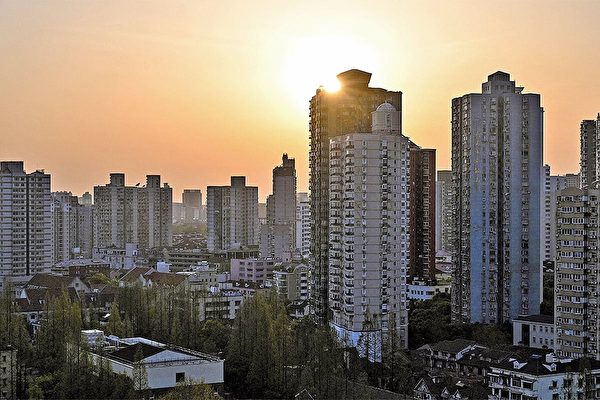China continues to struggle, with housing prices continuously declining. Official data shows that the price-to-income ratio in 35 large and medium-sized Chinese cities has dropped from 16.03 in 2019 to 11.87 this year, a significant decrease of 26%.
According to a report by “China Real Estate News” on August 2, in recent years, residential sales area has declined by nearly 50% from its peak, and the overall price decline in most cities has exceeded 25%. The report is supervised by the Ministry of Housing and Urban-Rural Development of the Chinese Communist Party.
In 2019, “China Real Estate News” conducted a statistical analysis of the price-to-income ratio in 35 typical large and medium-sized cities. Using the same approach this year, the results show that the average price-to-income ratio in the same 35 large and medium-sized cities has dropped from 16.03 in 2019 to 11.87 this year, marking a 26% overall decrease.
Looking at the changes in the price-to-income ratio over the past five years, Qingdao stands out with a sharp decline from 18.35 in 2019 to 9.61, a staggering 48% decrease. Taiyuan and Guiyang also saw declines of 40%, with Taiyuan dropping from 13.44 to 8.07, and Guiyang from 10.55 to 6.29.
In 2019, only 6 cities had a price-to-income ratio in single digits, but this year, 18 cities have reached single-digit ratios. Cities like Yinchuan, Hohhot, Urumqi, Changsha, Guiyang, Shenyang, and Changchun have already fallen into the international standard range (between 6 and 7).
The price-to-income ratio is considered an important indicator reflecting residents’ housing purchasing pressure. It is calculated by dividing the average housing price by the household’s average annual income, used to measure consumers’ actual purchasing power for real estate.
According to international conventions, a reasonable range for the price-to-income ratio is between 3 and 6 times. Considering housing loan factors, housing consumption should account for less than 30% of residents’ income.
The report interprets the changes in this indicator as a relief in residents’ housing purchasing pressure, stating that the significant decrease in the price-to-income ratio is due to both the recent drop in housing prices and the growth in residents’ disposable income.
However, people have different experiences and opinions on the matter. Some express skepticism and frustration towards the reported improvements, highlighting personal financial struggles and questioning the affordability of homeownership in the current economic climate.
Amid media reports praising the opportune time to invest in real estate, individuals voice concerns about uncertain job security and stagnant wages. Many are wary of taking on long-term mortgages without a clear financial outlook, questioning the meaning of life amidst such financial burdens.
As the economy falters, thoughts turn to stimulating consumption and reducing housing prices. Many feel that the average person’s purchasing power has long been stifled by the burden of housing costs, especially during the fervent real estate market of recent years. Reviving the economy seems tied to significant reductions in housing prices, as high property costs remain a substantial burden on Chinese households.
The disparity between income levels and property prices in various regions further exacerbates concerns about sustainable economic growth and individual financial stability. Residents in lower-tier cities struggle with inflated housing costs comparable to provincial capitals, leading to frustration and doubts about future economic prospects.

